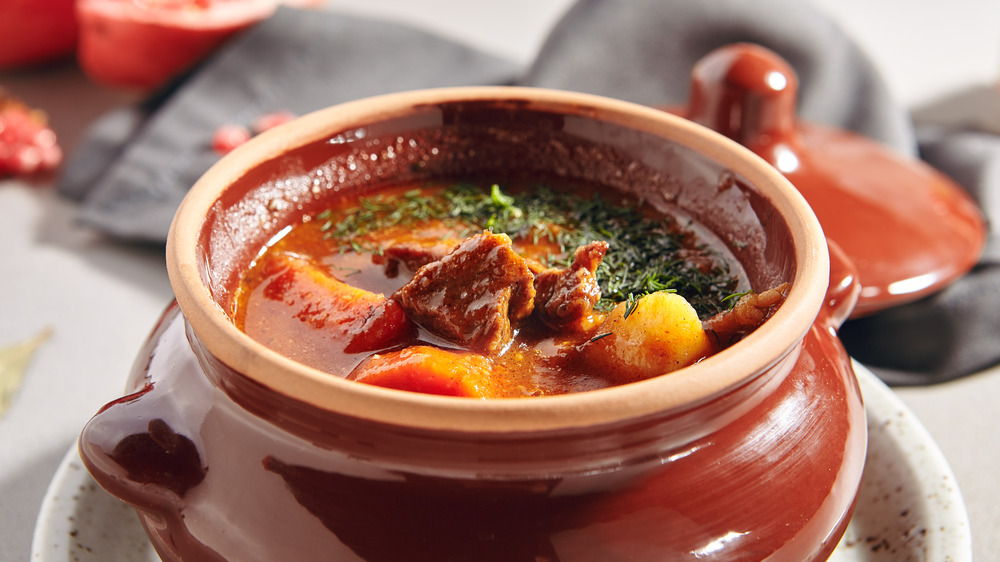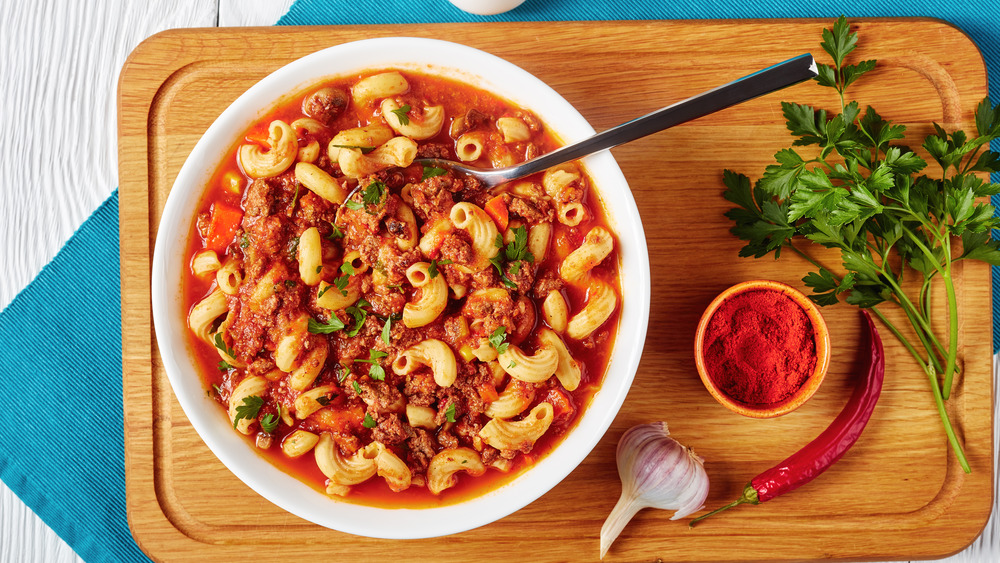How Authentic Goulash Is Different From The American Version
As a wise man called Anthony Bourdain once said, "Good food is very often, even most often, simple food" (via Goodreads). And if the ethos of simple food could be reduced to one dish, it might very well be goulash. But there's Hungarian goulash, and then there's American goulash. And they might both be simple, but they are not created equal. We're here to tell you the difference between these two tomatoey, beefy comfort foods which, more often than not, have little more in common than their name.
Hungarian goulash, according to Saveur, is a centuries-old tradition initially popularized by its portability. "Portable?" You might ask. "A stew?" Well, sort of. The Maygars, sheep and cattle-herding nomads who around 800 AD migrated from the Ural Mountains to more fertile land near the Danube River, would wander in small groups across large distances with their flocks. They would dry and cure meat, and store it along with other long-lasting ingredients like onion, bacon, or lard. All they needed on a stop was to add water and cook the ingredients to create a passable re-hydrated meal. With the introduction of peppers in the 15th century – goulash or in Hungarian, gulyas - as we know it became more popular. In a country that was continually invaded by various powers, Hungarians kept gulyas as their national dish.
Hungarian goulash is nothing like American goulash
Hungarian goulash is one of those foods that – like lasagna or chicken noodle soup — take on a different life in every cook's kitchen. The basics are beef, tomatoes, lots of paprika, onions, and usually, potatoes and carrots. Beyond that, it's up for interpretation, like all the best foods. Saveur's version adds caraway seeds and parsnips. Others, like The Spruce Eats, feature green bell peppers. With potatoes providing starch, there's no need for thickeners. Hungarian goulash, unlike its sheep-herder predecessor, is deep and rich and achieves its flavor by cooking long and slow — no added broth necessary.
American goulash, on the other hand, is a spin-off that combines the original goulash with the two, arguably most important tenets of American home cooking: simplicity and speed. It's still as riff-able as the original, but an entirely new beast that evolved into something like a meaty marinara pasta, which combines macaroni with some version of red sauce and beef. Betty Crocker's version is basically just elbow macaroni with beefy tomato sauce, plus a teaspoon of paprika, cheese, and croutons. The Recipe Critic makes it with a splash of soy sauce, and no paprika whatsoever! As the blog Fork + Plate writes, American "goulash blows past any definition of 'variation' to something more akin to spontaneous regeneration across several continents." But no matter – whichever goulash you prefer, it's sure to warm your cold, socially-distanced nights.

